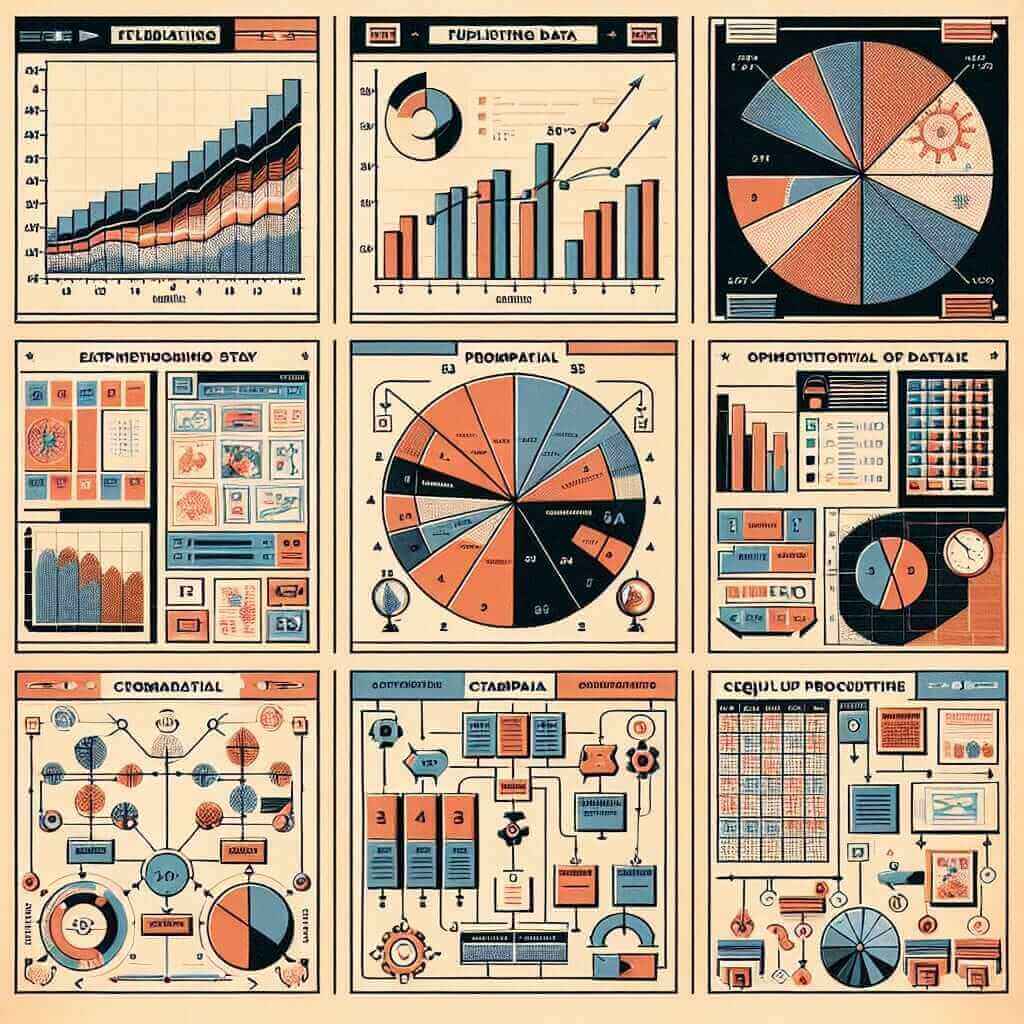Charts and graphs are frequent visitors in the IELTS Reading section. They are powerful tools for presenting data visually, and understanding how to interpret them is crucial for achieving a high score. This guide will equip you with the skills to confidently tackle any chart that comes your way.
Understanding Different Chart Types
Before we delve into interpretation, let’s familiarize ourselves with the common chart types you might encounter:
1. Line Graphs: Show trends over time, with the x-axis typically representing time and the y-axis representing the variable being measured.
2. Bar Charts: Compare different categories at a specific point in time. The length of each bar corresponds to the value it represents.
3. Pie Charts: Illustrate proportions of a whole, with each slice representing a percentage of the total.
4. Tables: Present data systematically in rows and columns, allowing for easy comparison.
5. Flow Charts: Depict processes or sequences of events, using arrows to show direction.

Key Strategies for Chart Interpretation
1. Read the Title and Labels Carefully:
The title provides context for the data presented, while axis labels and legends explain what each element represents.
Example:
A chart titled “Global Smartphone Sales by Operating System (2015-2020)” tells us we are looking at the sales figures for different phone operating systems over a five-year period.
2. Identify Trends and Patterns:
Look for significant increases, decreases, fluctuations, or any notable relationships between different data points.
Example:
In a line graph showing website traffic over a month, a sharp spike in visitors during the second week could indicate a successful marketing campaign.
3. Pay Attention to Units of Measurement:
Units provide a scale for the data. Make sure you understand what each unit represents to avoid misinterpreting the information.
Example:
A bar chart showing the number of books sold might use units of “thousands,” meaning a bar labeled “5” represents 5,000 books sold.
4. Compare and Contrast Data:
Charts often present data for multiple categories or time periods. Compare and contrast these to draw meaningful conclusions.
Example:
A pie chart comparing energy sources might show that renewable energy makes up a smaller proportion than fossil fuels, highlighting the need for alternative energy development.
5. Look for Supporting Information in the Text:
The text accompanying the chart often provides additional context, explanations, or specific data points that might not be immediately obvious from the chart itself.
Example:
A line graph showing declining fish populations might be accompanied by text explaining the impact of overfishing on marine ecosystems.
Applying Chart Interpretation to IELTS Reading
In the IELTS Reading section, you will encounter charts in various question types, including:
-
Multiple Choice Questions: You might be asked to identify trends, compare data, or choose the most accurate statement based on the chart.
-
Matching Information: You may need to match specific data points from the chart to corresponding information in the text.
-
Sentence Completion: You could be asked to complete sentences with information extracted from the chart, paying close attention to grammar and vocabulary.
-
Summary Completion: You might need to fill in gaps in a summary of the information presented in the chart, using words from the text or synonyms.
Common Mistakes to Avoid:
- Misinterpreting Units: Always double-check the units of measurement to avoid drawing inaccurate conclusions.
- Ignoring the Text: Don’t rely solely on the visual information in the chart. Always read the accompanying text for context and supporting details.
- Rushing Through the Question: Take your time to analyze the chart and understand the question before selecting your answer.
- Overthinking or Making Assumptions: Stick to the information presented in the chart and avoid making assumptions or drawing conclusions not supported by the data.
Practice Makes Perfect
The best way to master chart interpretation is through regular practice. Utilize IELTS practice tests and familiarize yourself with a variety of chart types and question formats. By honing your skills and applying these strategies, you’ll be well-prepared to tackle any chart that comes your way in the IELTS Reading section.